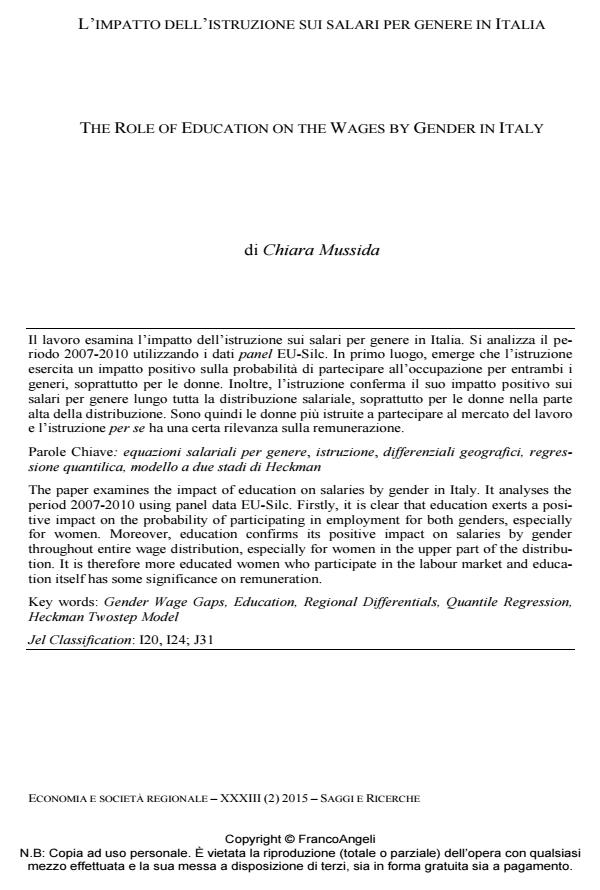The role of education on the wages by gender in Italy
Journal title ECONOMIA E SOCIETÀ REGIONALE
Author/s Chiara Mussida
Publishing Year 2015 Issue 2015/2
Language Italian Pages 20 P. 94-113 File size 404 KB
DOI 10.3280/ES2015-002007
DOI is like a bar code for intellectual property: to have more infomation
click here
Below, you can see the article first page
If you want to buy this article in PDF format, you can do it, following the instructions to buy download credits

FrancoAngeli is member of Publishers International Linking Association, Inc (PILA), a not-for-profit association which run the CrossRef service enabling links to and from online scholarly content.
The paper examines the impact of education on salaries by gender in Italy. It analyses the period 2007-2010 using panel data EU-Silc. Firstly, it is clear that education exerts a positive impact on the probability of participating in employment for both genders, especially for women. Moreover, education confirms its positive impact on salaries by gender throughout entire wage distribution, especially for women in the upper part of the distribution. It is therefore more educated women who participate in the labour market and education itself has some significance on remuneration.
Keywords: Gender Wage Gaps, Education, Regional Differentials, Quantile Regression, Heckman Twostep Model
Jel codes: I20, I24; J31
Chiara Mussida, L’impatto dell’istruzione sui salari per genere in Italia / Appendice Statistica in "ECONOMIA E SOCIETÀ REGIONALE " 2/2015, pp 94-113, DOI: 10.3280/ES2015-002007